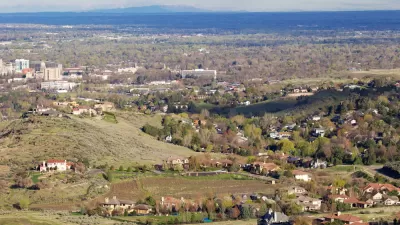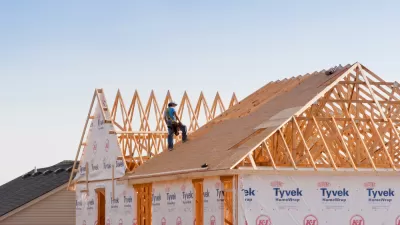Voters in Alameda, a city of nearly 80,000 people on an island in the East San Francisco Bay Area, will vote to end a prohibition on multi-family housing that has been in place since 1973.

"Alameda voters will decide whether to allow construction of multi-family housing units in Alameda in the upcoming November election," reports Ekene Ikeme.
The ballot measure, Measure Z, would "repeal Article 26 of the City Charter, which prohibits multiple dwelling units from being built," according to Ikeme.
Yes, you read that correctly. Voters in the city of Alameda, a city in the East Bay Area in Northern California, will decide whether or not to end single-family zoning.
The Measure Z question states, “Shall the measure amending the City Charter to repeal the prohibition against the building of multi-family housing in Alameda and amending the City Charter and the General Plan to repeal the citywide density limitation of one housing unit per 2,000 square feet of land be adopted?”
Previous decisions to rescind single-family zoning restrictions, like in the city of Minneapolis and the state of Oregon, have depended on legislative processes that never faced a direct vote by residents.
Measure Z would, in effect, overturn two previous measures approved by voters: Measure A in 1973 and Measure A in 1991. The 1973 vote prohibited the development of multiple dwelling units. The 1991 vote set the city's development density at one housing unit per2,000 square feet of land.
Measure Z follows a report prepared by city staff in 2018 that determined Article 26 of the city's charter does not comply with state law.
FULL STORY: NEW HOUSING MEASURE ON UPCOMING BALLOT

Planetizen Federal Action Tracker
A weekly monitor of how Trump’s orders and actions are impacting planners and planning in America.

Maui's Vacation Rental Debate Turns Ugly
Verbal attacks, misinformation campaigns and fistfights plague a high-stakes debate to convert thousands of vacation rentals into long-term housing.

San Francisco Suspends Traffic Calming Amidst Record Deaths
Citing “a challenging fiscal landscape,” the city will cease the program on the heels of 42 traffic deaths, including 24 pedestrians.

Amtrak Rolls Out New Orleans to Alabama “Mardi Gras” Train
The new service will operate morning and evening departures between Mobile and New Orleans.

The Subversive Car-Free Guide to Trump's Great American Road Trip
Car-free ways to access Chicagoland’s best tourist attractions.

San Antonio and Austin are Fusing Into one Massive Megaregion
The region spanning the two central Texas cities is growing fast, posing challenges for local infrastructure and water supplies.
Urban Design for Planners 1: Software Tools
This six-course series explores essential urban design concepts using open source software and equips planners with the tools they need to participate fully in the urban design process.
Planning for Universal Design
Learn the tools for implementing Universal Design in planning regulations.
Heyer Gruel & Associates PA
JM Goldson LLC
Custer County Colorado
City of Camden Redevelopment Agency
City of Astoria
Transportation Research & Education Center (TREC) at Portland State University
Jefferson Parish Government
Camden Redevelopment Agency
City of Claremont





























